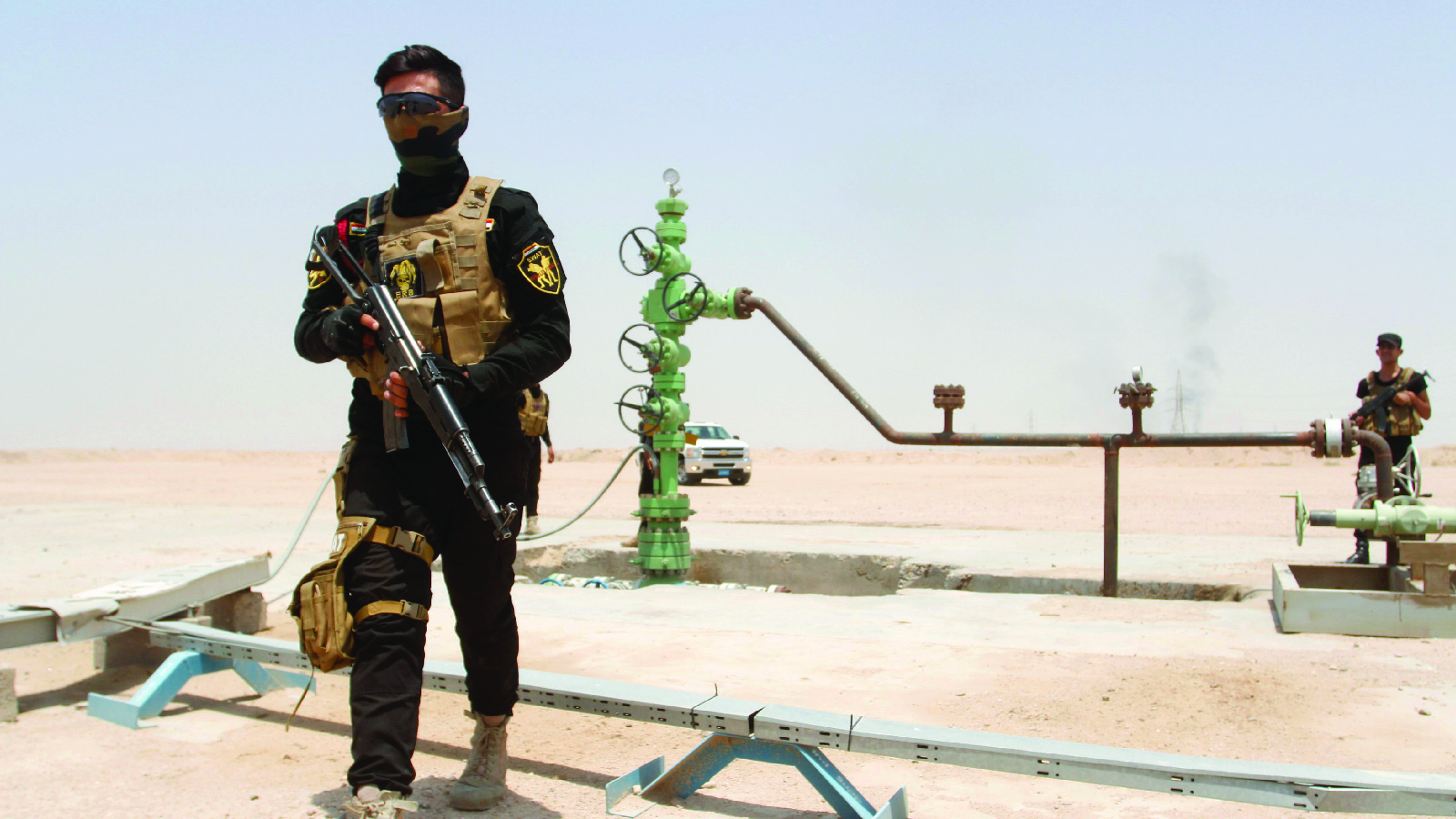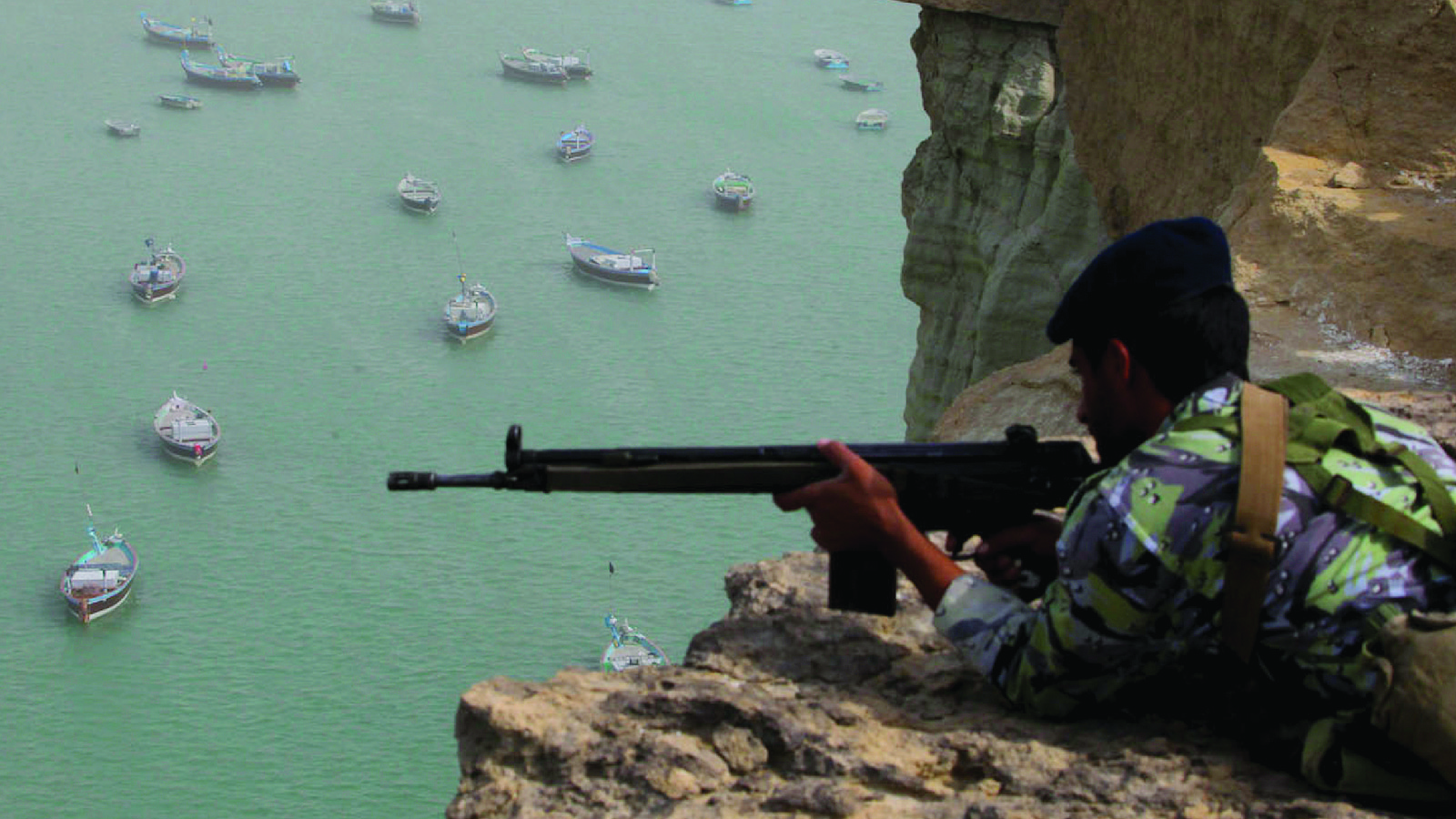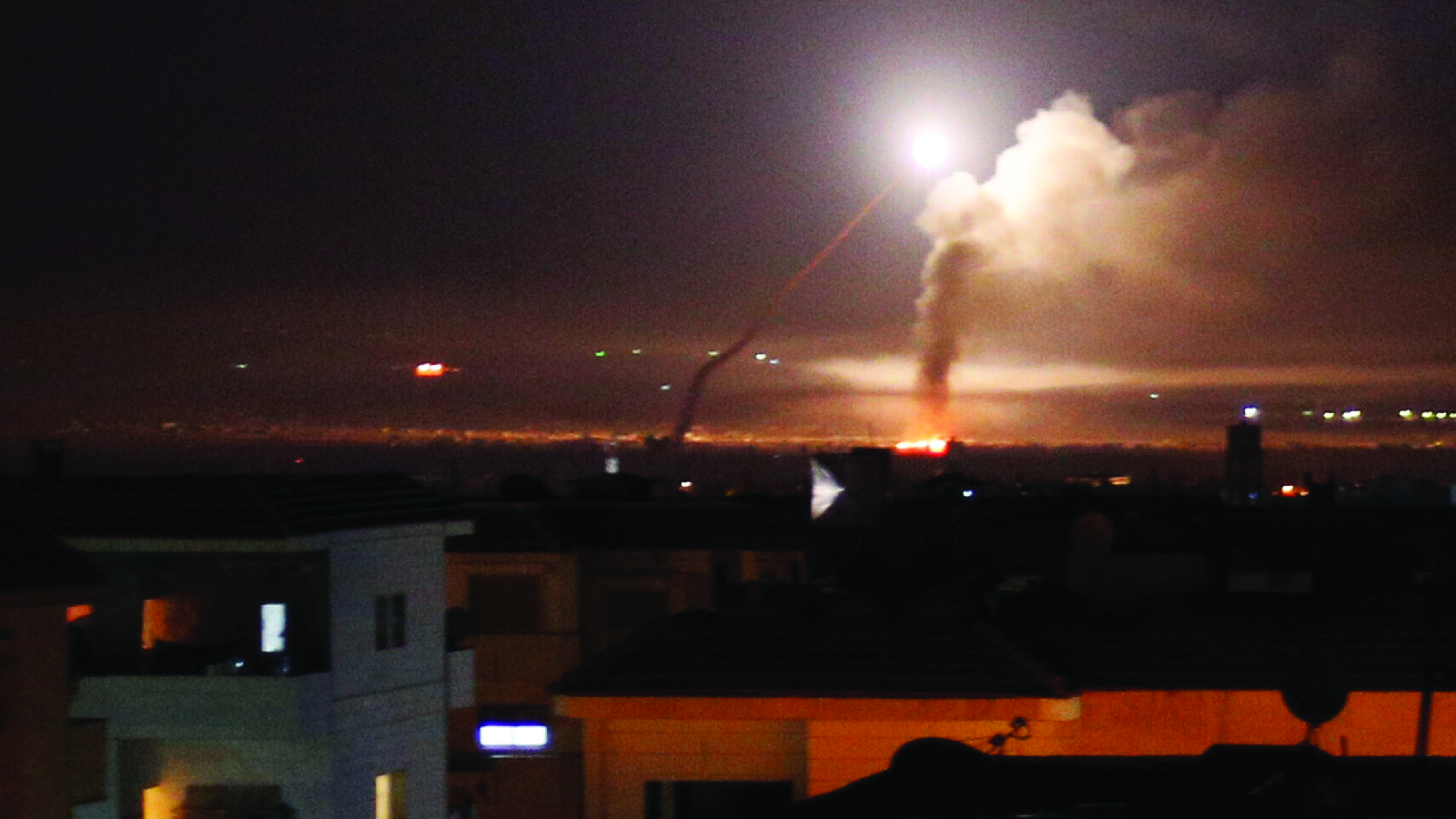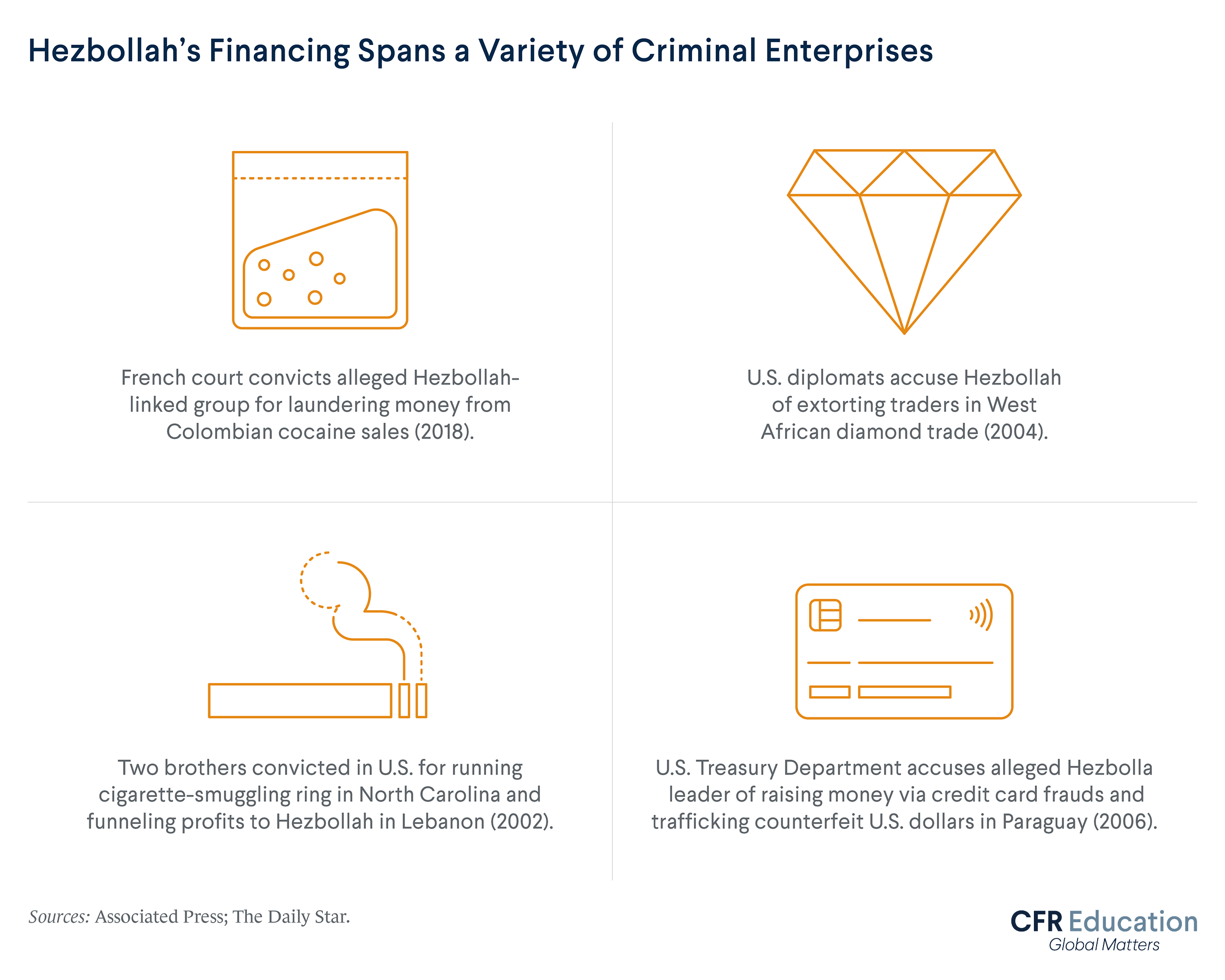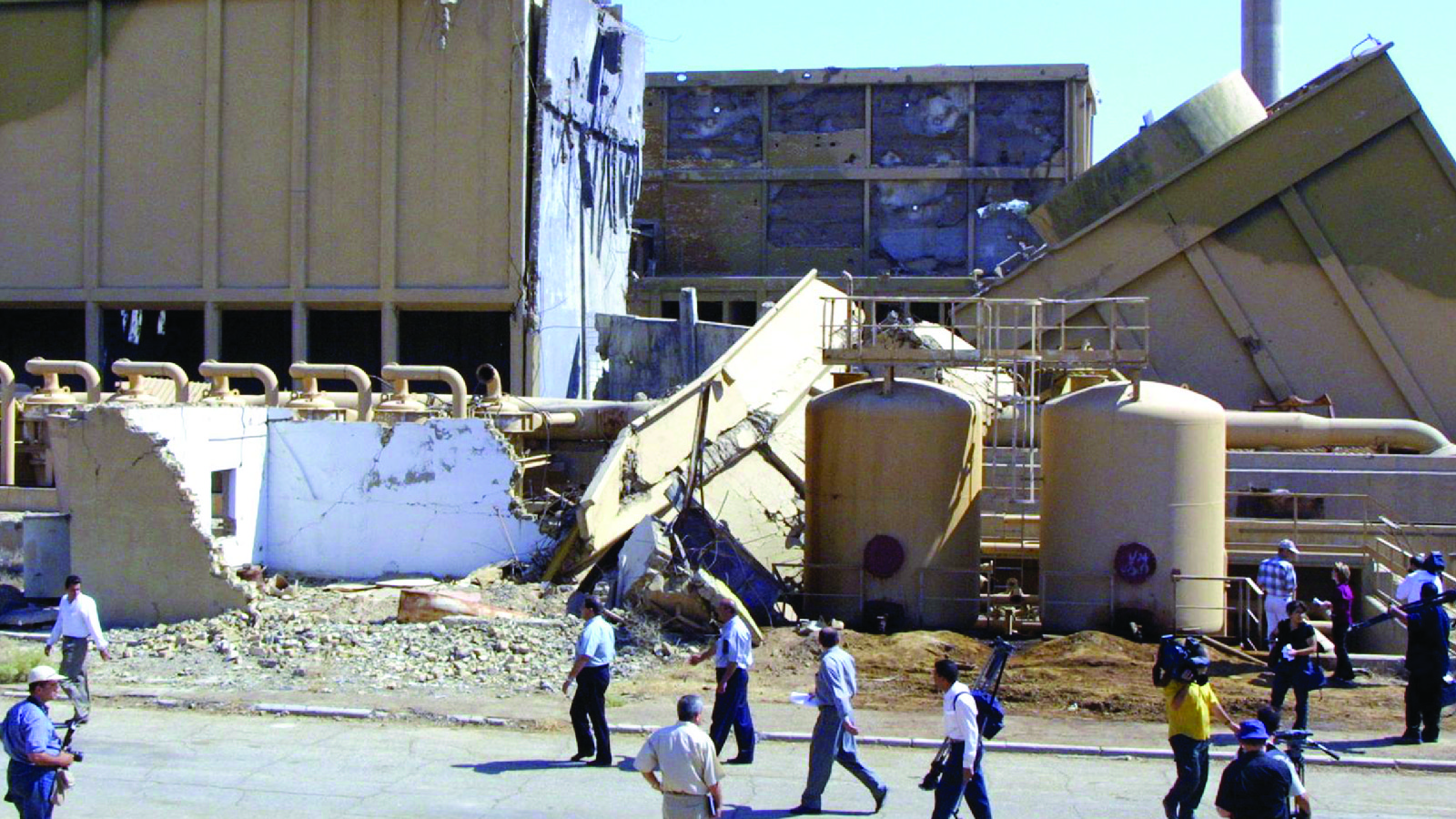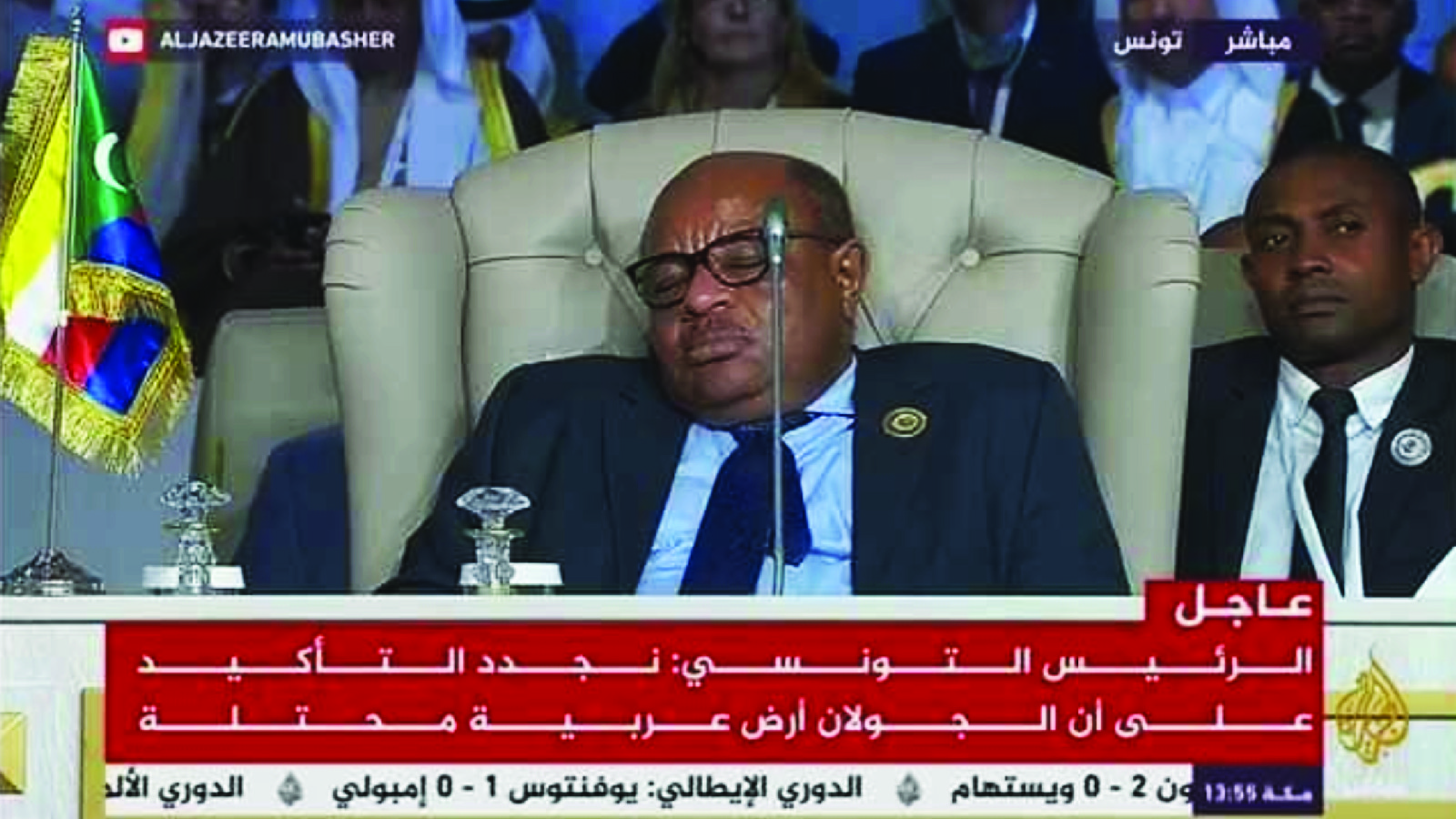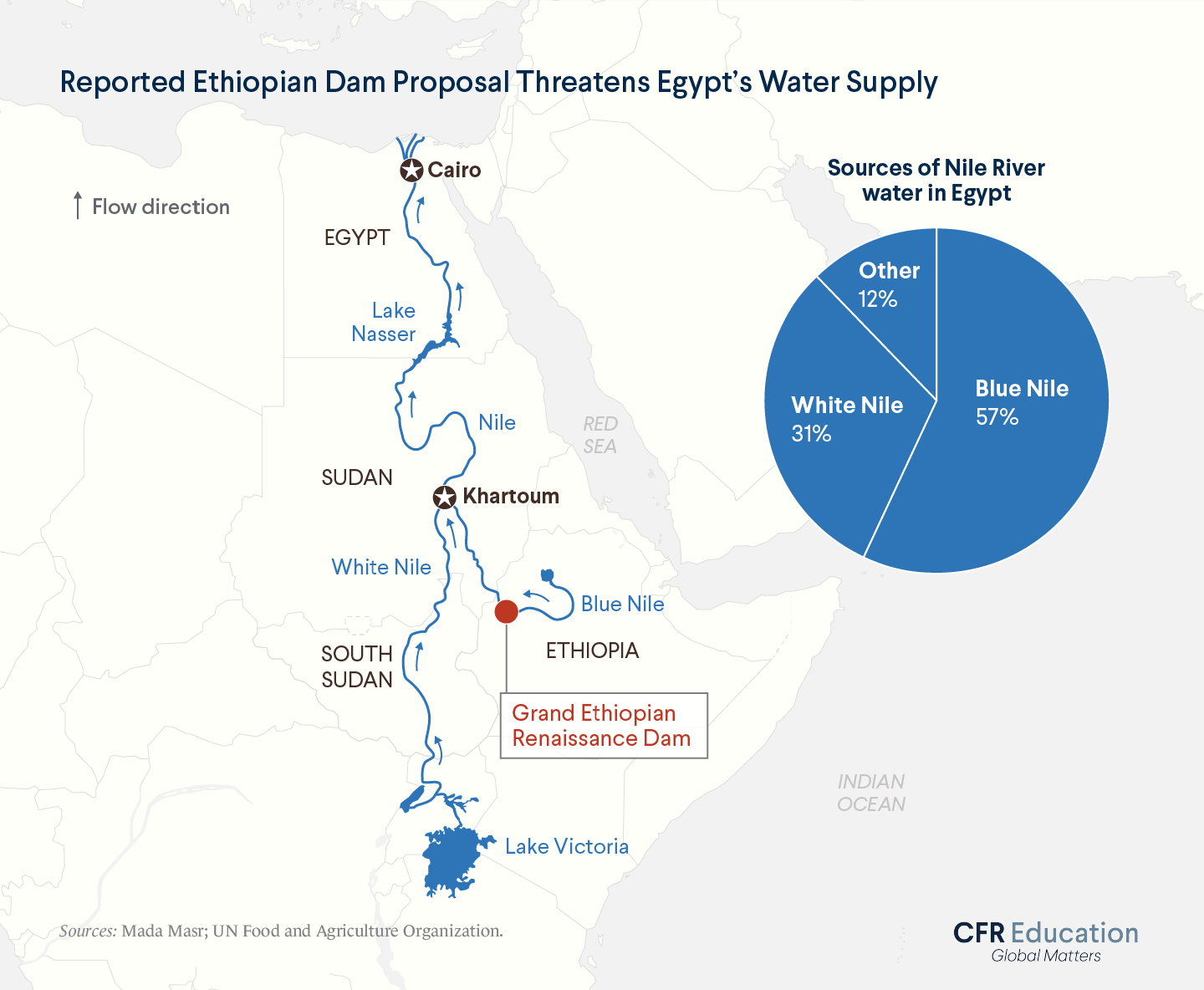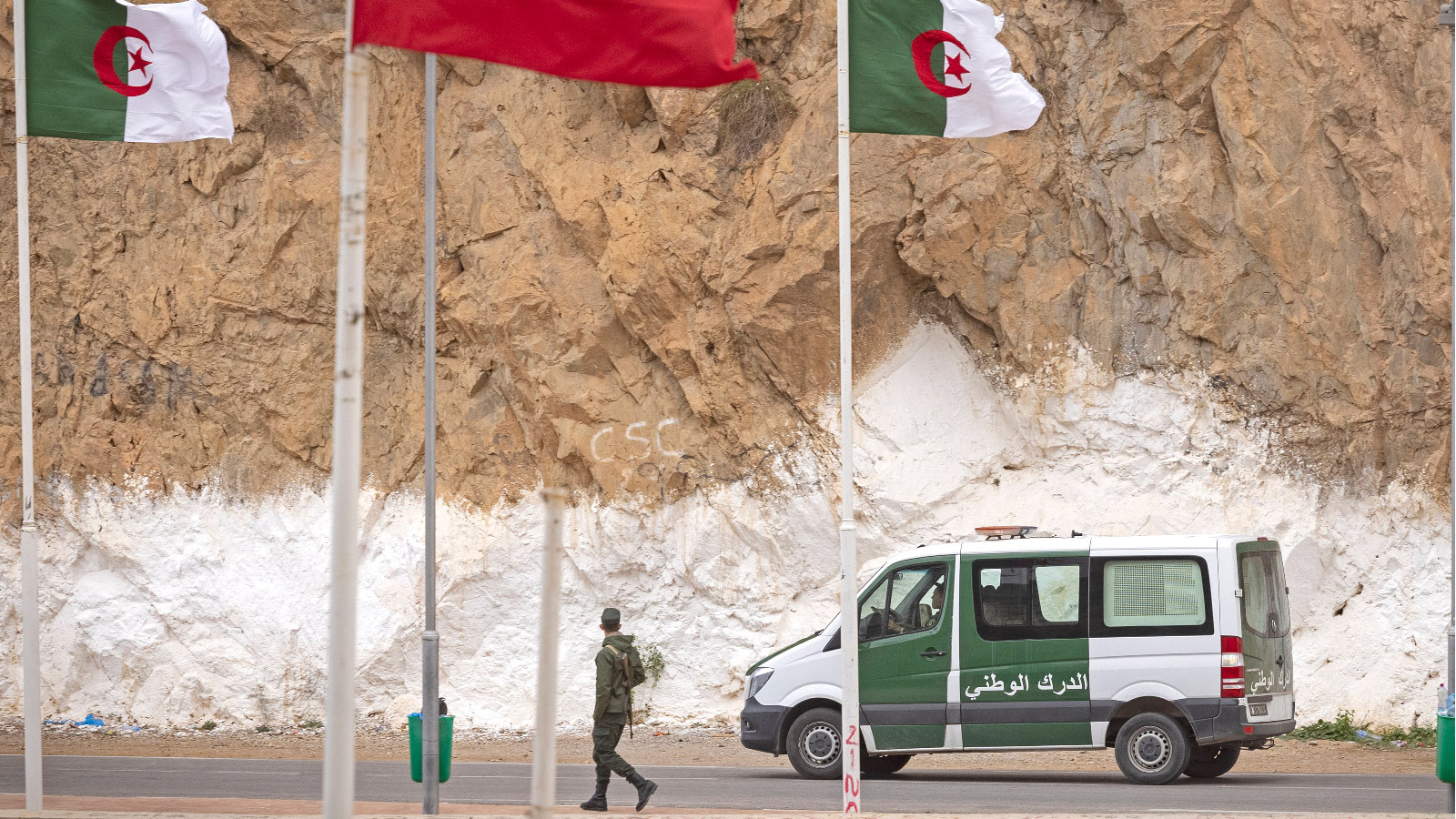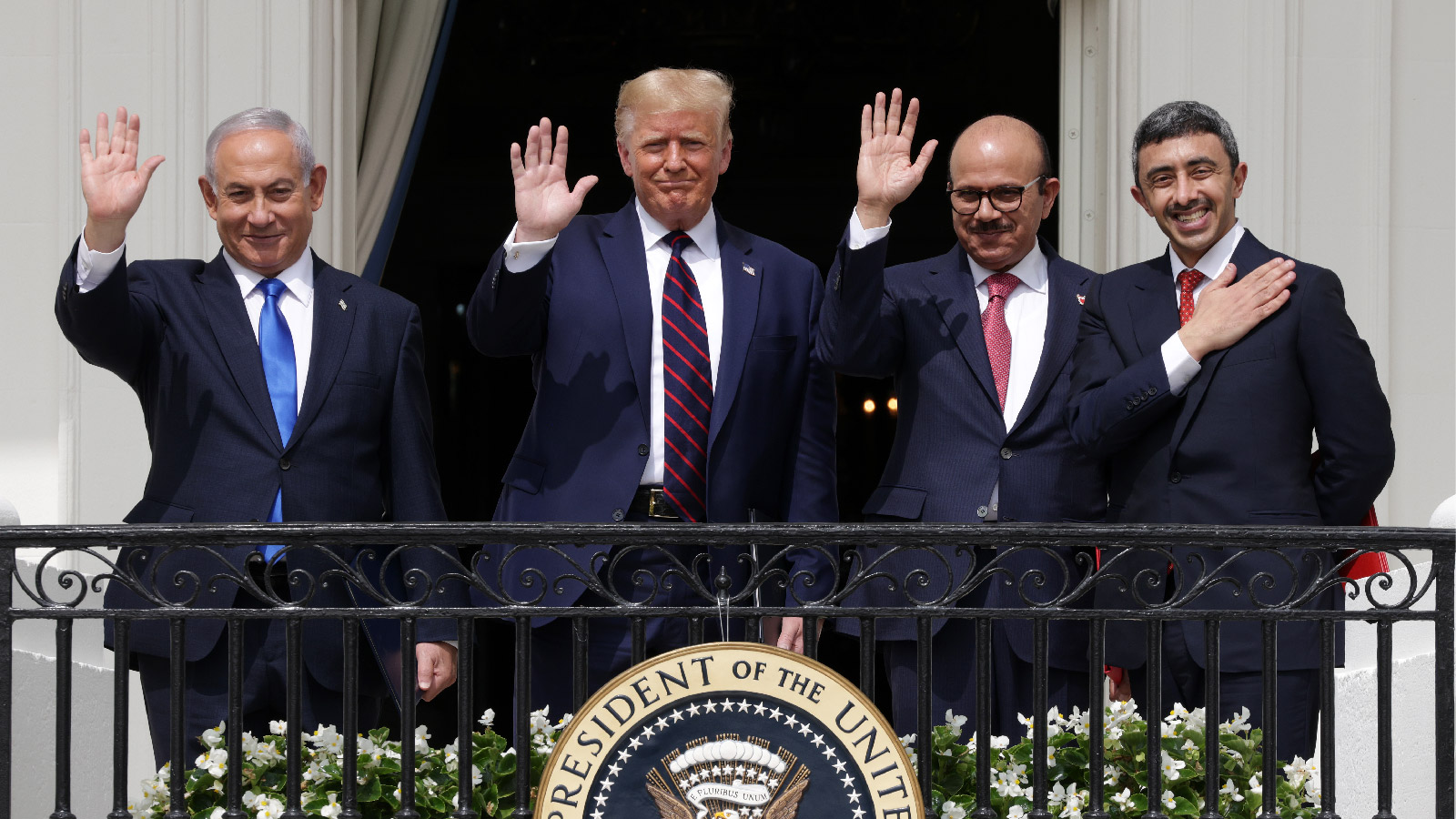Regional Politics: Middle East and North Africa
From Saudi-Iran rivalries to Arab-Israeli normalizations, learn how ten key relationships define the region.
For centuries, the Middle East served as the crossroads of empires, given its location between Europe and Asia. In modern times, a different feature of the region enticed outside powers: oil. In the twentieth century, the discovery of oil fueled rivalries between foreign powers looking to exploit the resource.
The influence of those foreign powers changed rapidly throughout the twentieth century. World War I established British and French dominance in the Middle East and North Africa. Later, the Cold War rivalry between the United States and the Soviet Union fueled arms races and conflicts across the region.
The United States emerged as the dominant foreign power in the Middle East after the mid-20th-century withdrawals of Britain and France and the Soviet Union’s collapse. However, U.S. involvement has declined due to policy failures in Iraq, stalled Israeli-Palestinian peace efforts, and increased American oil and gas production.
In its place, new countries are filling the vacuum, including China, Russia, and Turkey. Likewise, regional powers—namely Iran and Saudi Arabia—compete in an escalating struggle for regional dominance.
This new competition has inflamed the Middle East’s already-fragile political situation. For instance, Iran now aims to extend its influence all the way to the Mediterranean by supporting proxy forces in Iraq, Lebanon, and Syria. These proxy forces have only aggravated existing conflicts in those countries. Meanwhile, Saudi Arabia is determined to limit Iran’s expansion. It has done this by also supporting armed groups, as well as intervening militarily—like in Yemen.
Although competition still defines much of the region, there is also cooperation between countries. Some of this cooperation is formed around shared economic goals, like oil production. In other cases, it revolves around security priorities, such as combating terrorism. The region is also home to organizations such as the Arab League, Organization of the Islamic Council, and Gulf Cooperation Council. These regional institutions play a variety of roles in efforts to mediate challenges and opportunities across the region.
What else defines the region?
Here are ten regional issues that continue to drive events across the Middle East and North Africa.
1. Saudi Arabia and Iran: The Middle East’s Cold War
Several countries in the Middle East are experiencing ongoing instability. War rages on in Syria. Yemen is in the midst of an unprecedented humanitarian crisis. And Lebanon’s government is consistently roiled by political infighting. What do these conflicts all have in common? Behind the scenes, two powerful countries—Iran and Saudi Arabia (with support from the United Arab Emirates)—support opposite sides. Each provides weapons, funnels money, manipulates politicians, and even participates directly in the fighting. Their rivalry revolves around an intense competition to be the dominant power in the region. It also cuts across religious lines. Saudi Arabia is one of the most powerful countries home to the majority Sunni-sect of Islam. It backs Sunni governments and armed groups in places like Bahrain and Yemen. Meanwhile, Iran is the Middle East’s largest country of the Shia sect. It has supported aligned groups like the Lebanese organization Hezbollah as well as militias in Iraq and Syria. Iran and Saudi Arabia have never directly gone to war, but their power competition affects conflicts throughout the Middle East.
2. The Gulf States: Oil Fuels Competition
The Middle East accounts for just 4 percent of global GDP. Yet the region carries an outsize importance in the global economy given its abundant supply of two natural resources: oil and natural gas. These resources power cars, supply electricity to cities, and fuel freighters that ship goods around the world. The largest oil-producing countries in the region are the several countries that border the Persian Gulf. These Gulf countries include Saudi Arabia, Iraq, Kuwait, and the United Arab Emirates. Around 20 percent of the world’s total oil supply passes through a narrow body of water known as the Strait of Hormuz, which connects the Persian Gulf to the Indian Ocean. This makes the strait strategically important, and also a site of potential confrontation. Both Saudi Arabia and Iran border the strait. In 2019, competition between the two countries escalated into a series of Iran-sponsored attacks on tankers and Saudi oil installations around the strait. The United States has strongly supported its partner, Saudi Arabia, through sanctions, cyberattacks, and direct military action against Iran.
3. Syria: Battlefield for International Proxy War
Countries outside the Middle East have long intervened in the region’s affairs, often to advance competing economic, political, and other strategic interests. These interventions can turn domestic conflicts into far larger and deadlier wars. Syria is a prime example. In 2011, Syrians protested the oppressive rule of president Bashar al-Assad. The government responded with violence, plunging the country into civil war. But the conflict didn’t stay local. Countries around the world poured money, weapons, and fighters into Syria in support of their various agendas. Russia and Iran defended the Assad government, their longtime partner. The United States and Europe backed opposition factions in a bid to depose Assad. Gulf countries like Saudi Arabia and Qatar supported opposing Islamist groups. Israel launched air strikes and Turkey rolled in its tanks, both to counter perceived domestic threats. In 2024, after thirteen years of civil war and international involvement, the Assad regime fell to a coalition of rebel groups. Syria once again faces an uncertain future.
4. Iraq and Syria: The Islamic State Challenges Regional Borders
Another consequence of Syria’s civil war has been the empowerment of the self-proclaimed Islamic State, also known as ISIS. The extremist group literally bulldozed the border between Iraq and Syria, erecting their own religious—rather than political—boundaries. At its peak, the Islamic State controlled a territory in Iraq and Syria larger than Great Britain. It took an international military coalition of more than seventy countries to uproot the extremist group from the cities it held. But the campaign came at great cost, destroying entire cities and killing thousands of civilians. Though the Islamic State no longer holds territory in Iraq and Syria, it continues to pose a global threat. Hundreds—if not thousands—of its members evaded capture, returning to the group’s roots of carrying out hit-and-run operations in the region. Meanwhile, new Islamic State chapters continue to inspire, coordinate, and carry out attacks in Afghanistan, Libya, Sri Lanka, West Africa, and elsewhere around the world.
5. Lebanon and Iran: Hezbollah’s Wide Reach
Another regional group not easily defined by traditional borders is Hezbollah. Hezbollah, or “Party of God” in Arabic, is a Shiite Muslim armed group and political party in Lebanon. For decades, the group has held seats in Lebanon’s parliament and governed regions in the country’s south and east. Hezbollah emerged in the 1980s to resist Israel’s invasion and occupation of southern Lebanon. Pledging its loyalty to Iran’s leader at the time, Hezbollah called for the destruction of Israel and the expulsion of Western forces from the region. It quickly gained popular support and influence within Lebanon’s government. The group also established a highly sophisticated global financing network to fuel its military and political capabilities. Hezbollah receives funding each year from Iran. It also generates millions from illicit operations around the world, including drug trade in the Middle East, smuggling operations in South America, and the conflict diamond industry in West Africa. Recently, following Hamas’ October 7, 2023 attacks on Israel, Hezbollah increasingly exchanged rocket and missile strikes with Israel. In October 2024, Israel stepped up its response by launching a ground invasion to uproot the group from southern Lebanon. It also conducted strikes against Hezbollah’s leadership that killed the group’s longtime leader, Hassan Nasrallah. Given Hezbollah’s strength and regional partners, this escalation has raised concern about pull the region into a wider war.
6. Israel and Iran: A Threat of Nuclear Escalation?
Israel is widely believed to be the only country in the Middle East with nuclear weapons. Though it maintains conventional military superiority over its neighbors, Israel fears that another country obtaining a weapon of mass destruction could pose an existential threat. This concern has led Israel to destroy nuclear facilities in Iraq and Syria and to threaten to do the same in Iran. Iran, particularly, has long been on a path to develop nuclear weapons. U.S. officials now estimate that Iran could very quickly produce enough material for a nuclear bomb. This development risks escalating an already unstable situation; both Iran and Israel have exchanged missile attacks and grown increasingly belligerent since Hamas’ October 7 attacks on Israel. Iran’s support for Hezbollah adds even more fuel to the region’s growing fire. If Iran achieves its nuclear ambitions, continued escalation in the region could develop into a conflict between two nuclear powers.
7. The Arab League and the Gulf Cooperation Council: Unreliable Mediators
Middle Eastern leaders in the 1950s and 1960s championed Pan-Arabism, an ideology that called for political unity and economic cooperation across countries in the region. But today, there is little that politically binds the Middle East. Consequently, weak multilateral organizations are unable to address the region’s serious challenges. The Arab League, formed in 1945, is one organization. It seeks to promote cooperation among twenty-two member countries. However, the group has struggled to promote security and prosperity where other regional institutions such as the European Union or the Association of Southeast Asian Nations have succeeded. In the fight against the Islamic State, for instance, the Arab league did little to help the Iraqi government, despite having officially condemned the Islamic State. There is also the Gulf Cooperation Council (GCC), which aspires to promote cooperation among the oil-rich Gulf countries. The GCC has played a role in advancing regional solidarity. The group even hosts sports events to advance cultural exchange across its six member states. The GCC, too, however, has been undercut by internal rivalries. In 2017, tensions among members led Saudi Arabia and the United Arab Emirates to impose a nearly four-year blockade on Qatar.
8. Egypt and Ethiopia: Nile River Becomes Battleground for Water Security
Egypt is the region’s largest country. Approximately 95 percent of Egyptians live along the Nile River. But Egypt is not the only country with claims to the Nile. The majority of the river originates in Ethiopia, a rapidly developing country with a growing demand for energy. For generations, Egypt dictated water-sharing rights to its weaker, sub-Saharan neighbor. But when the Arab uprisings (often referred to as the 2010 Arab Spring) threw Egypt into turmoil, Ethiopia moved to gain more control by announcing plans to build Africa’s largest hydroelectric dam. Egypt fears the dam could limit its already strained water resources. As a result, it has threatened political and military action to halt the dam’s construction. With both countries experiencing growing populations and worsening effects of climate change, control over limited water resources is an increasingly pressing geopolitical challenge. Across the region, climate change threatens other important (and contested) waterways, too, including the Euphrates, Jordan, and Tigris.
9. Algeria and Morocco: The Maghreb’s Jostling Powers
The western part of the Arab world is sometimes referred to as the Maghreb. It includes Algeria, Libya, Mauritania, Morocco, Tunisia, and a disputed territory known as Western Sahara. In all, the Maghreb is inhabited by over one hundred million people. In recent years, Algeria and Morocco have competed for regional influence. A flashpoint issue has long been the Western Sahara, a contested territory bordering both countries. Morocco occupies the majority of the territory. Algeria, however, supports the local Sahrawi people’s claims of self-rule in the Western Sahara. Some experts see this support as an attempt to contain Morocco's regional influence. In 2021, Algeria severed diplomatic relations with Morocco and halted gas shipments through the country. Both countries have also used foreign powers to further their own regional goals. Algeria has military relations with Russia, which supplies weapons. Morocco has recently normalized relations with Israel, after the United States recognized Morocco’s claim to the Western Sahara. Both Algeria’s and Morocco’s support for proxies in and outside the other’s borders has led some to label the relationship the Maghreb’s cold war.
10. Israel and Saudi Arabia: The Promise of New Partnerships
Prior to Hamas’ October 7 attacks on Israel, the region had seen progress in the normalization of relationships between Israel and Arab states. Through the 2020 Abraham Accords, the United Arab Emirates, Bahrain, and Morocco officially recognized Israel. These normalizations opened trade and economic opportunities for each country. Since then, the United States has sought to normalize relations between Israel and Saudi Arabia. Among other things, that partnership could open up new trade routes to Europe, allow for the creation of a civilian nuclear program in Saudi Arabia, and forge diplomatic relations between Israel and a key Arab country. The Palestinians, however, were largely absent from these negotiations, which angered Palestinian leaders. Iran also opposed Israeli-Saudi negotiations, as that partnership would further isolate its standing in the region. After October 7, 2023, Israel's military campaign in Gaza has strained (but not broken) some of Israel’s newly formed relationships with Arab states. And, at least for now, it has halted the prospects for Israeli-Saudi normalization.
